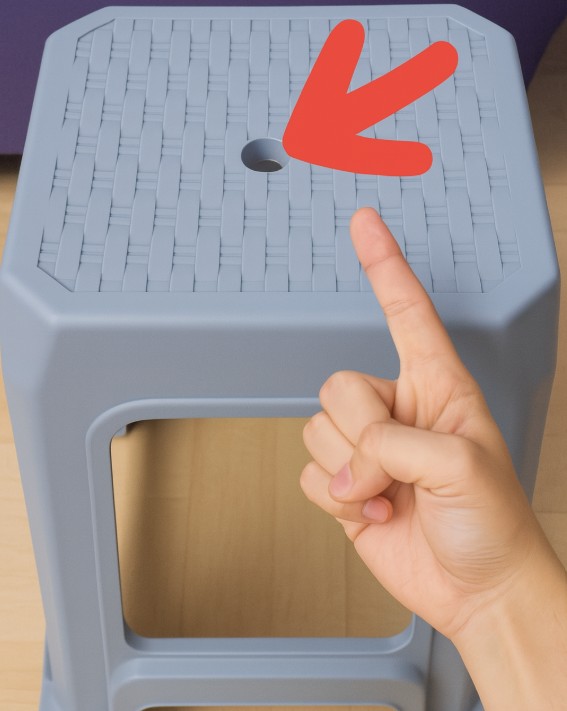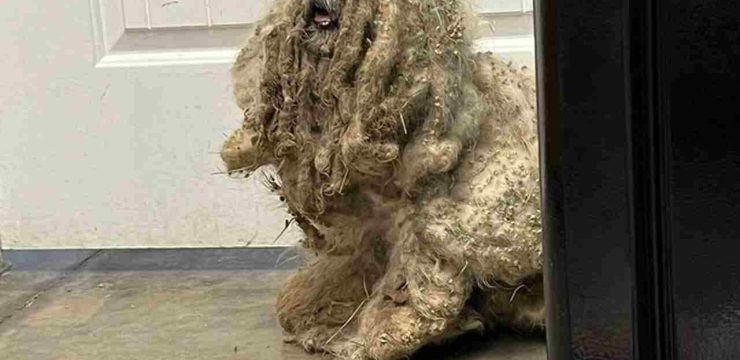Let’s talk about something oddly fascinating that most of us have probably seen thousands of times without giving it a second thought—the hole in the middle of a plastic chair or stool. You’ve likely sat on one at a backyard BBQ, in a neighborhood tea shop, at an outdoor event, or in a tiny food stall by the road.

And there it is, every single time: that mysterious hole dead-center on the seat. For years, it seemed like just a strange little design quirk—like someone forgot to finish the job or thought a hole might make the chair look cool. But that unassuming little circle isn’t just there for fun. It turns out that this so-called “pointless” feature is actually a quiet genius of design. It’s simple, smart, and surprisingly purposeful. So what is the real reason for that hole? First off, it makes plastic stools easier to stack and unstack. If you’ve ever tried pulling apart a tower of plastic stools, you know they tend to cling to each other like they’ve formed a pact.
That’s because when smooth plastic surfaces stack together, they can create a vacuum seal. The hole acts as a pressure-release point, letting air flow between the chairs and break that suction. Without it, you’d be fighting your way through a game of stool Jenga. It’s also surprisingly ergonomic. The hole makes for a convenient grip point—just hook your fingers in and lift. No need to awkwardly grab the legs or balance the seat with both hands. The stool has its own built-in handle. But the practicality doesn’t stop there. Ever left one of these stools outside and come back to find it holding a puddle of rainwater?
Thanks to the hole, the water drains out naturally. No one wants to sit in a cold pool of rainwater, especially if you’re wearing light-colored pants. In places like street food stalls or markets where water is used frequently for cleaning, that hole lets everything flow through instead of turning the chair into a mini slip-n-slide. Then there’s the manufacturing side.
These chairs are made using injection molding, where melted plastic is poured into a mold and then cooled to harden. The thickest part of the mold—the center—takes longer to cool. By removing that chunk of plastic and replacing it with a hole, the stool sets faster, uses less material, and speeds up production.
It’s a win for efficiency. That tiny hole means fewer resources and quicker turnaround times, which in large-scale production adds up to big savings. Plus, it trims down the weight of each stool. While that might not seem like a big deal for one single chair, multiply that by thousands or even millions, and suddenly that little hole is doing a lot of work. It helps cut down on shipping weight, reduces the use of plastic, and even lessens the environmental impact ever so slightly. And let’s not forget its secret superpower—it’s a magnet for mischief. Kids can’t resist poking their fingers in it, and let’s be honest, most adults have done it too.
It’s a random little moment of play that somehow sparks curiosity and conversation. In social gatherings, it becomes one of those oddly satisfying things that makes people smile once they notice it. So, what seemed like a meaningless void is actually a multipurpose design feature packed with logic. The plastic stool hole helps reduce suction, improve drainage, lower production costs, and lighten the load, all while serving as a built-in handle. It’s easy to overlook something so small, but the next time you sit down on one of those sturdy little plastic stools, take a second to appreciate the cleverness hiding in plain sight. It’s a perfect reminder that the most overlooked things in life often turn out to be the most useful, quietly doing their job without needing to be flashy about it.





